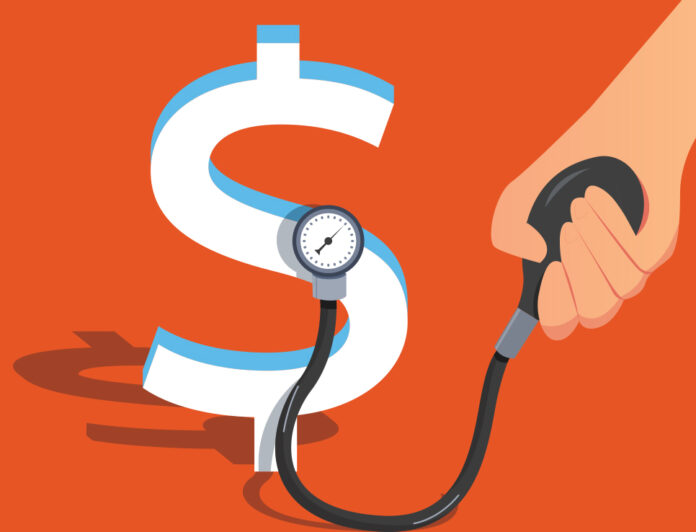On 1 March 2021 Minister of Health Andrew Little was reported by the Otago Daily Times giving Southern District Health Board (SDHB) a stern message over its high deficit level.
The Minister’s implied message was clear that SDHB was largely responsible for the deficit and had to fix it. Along with the other 18 (out of 20) DHBs who recorded deficits for the 2019-20 financial year, SDHB’s deficit was largely driven by factors beyond its control.
What are deficits
Deficits occur when DHBs spend more than the government pays them for their annual operating costs. For each financial year governments first determine how much they will fund DHBs for these costs (size of the fiscal pie) and then uses its Population Based Funding formula (PPF – population size with qualifiers such as tertiary services, ethnicity and rurality) to allocate each DHB its piece of the pie.
In the 2019-20 financial year SDHB recorded a $85.8 million deficit. The Government approved a $10.9 million deficit for the current financial year but SDHB is expected to breakeven in 2021-22. In the ODT Little reaffirmed this expectation. However, rather bravely, SDHB Chief Executive Chris Fleming has acknowledged this is “going to be extremely difficult to achieve.” Already for the current financial year the latest deficit projection is $15.7 million (nearly $5 million above the approved level).
To put SDHB’s $85.8 million deficit for 2019-20 in perspective, the combined deficits of the DHBs for that year was over $1 billion. However, nearly half of this amount is for systemic errors in applying the Holidays Act for working on public holidays which the Government has acknowledged this wasn’t the fault of the DHBs and agreed to fund separately.
Contrary to the position of the Labour Party when last in opposition including under his leadership, the Health Minister is now saying that the key issue behind deficits is the strength of DHBs fiscal management. While the crown’s auditor, NZ Audit, is generally positive about DHBs’ financial management, Little presumably prefers the negative assessment of the Ministry of Health in tandem with Ernest & Young Consulting.
Funding as a deficit driver
But is Little’s adamant position fair? In my view not at all. There are external drivers beyond DHBs control but, in both the short and long-term, within the control of governments. Funding is the immediate starter. This has been recognised by none less than Andrew Little himself but in a different role.
On 7 June 2017, as then Labour Party leader, Little announced the results of Labour’s commissioned research from Infometrics on real health spending under the then National led government. In his own words:
The funding needed for health to be restored to the level it was seven years ago to keep pace with cost pressures has widened to a massive $2.3 billion.
Little 2017 would advise Little 2021 to ensure that the funding of DHBs’ operational costs should, on the best data and other information available, be set at a level that would meet these costs. If Little 2021 was to take his 2017 namesake’s advice these deficits would disappear (one year’s deficit doesn’t carry over to the following year although their drivers do).
The cumulative impact of this $2.3 billion shortfall was a significant driver of increasing deficits that occurred in the mid-2010s and was inherited by the Labour led government elected in late 2017. It was only the third of the three subsequent budgets that provided a good increase to DHB funding (the first two were slight improvements).
Major capital works driver
There are twoother deficit drivers which, if sufficiently focussed on, could bend the curve of increasing operational costs. One can be fixed in the short-term – the impact of major capital works (mainly new hospital buildings and facilities).
Although funded separately from operational costs by government there is still a big financial impact on these costs because of the ongoing depreciation and the unnecessary punitive capital charge costs are required to be funded from operational funding. I’ve discussed this previously in Otaihanga Second Opinionincluding recommending treating depreciation differently and abolishing the charge.
Deficits are always higher in those DHBs that have to undertake major capital works than those that don’t. Canterbury DHB has the biggest deficit of all the DHBs. It is overwhelmingly driven by the fact that it has had to undertake the biggest hospital rebuilding construction following the 2012 earthquake. Without this most likely Canterbury would not have a deficit.
SDHB is going to soon be whacked hard by depreciation and capital charges with the planned massive rebuild of Dunedin Hospital. Owing to past neglect through historical underfunding other DHBs are queuing up behind SDHB.
Acute patient demand driver
A big driver in DHBs operational costs is increasing acute patient illness require urgent diagnosis and treatment. Acute demand is now increasing at a rate greater than population growth which significantly increases operational costs. There are several reasons behind this but can largely be summarised by worsening social determinants of health (such as low incomes and poor housing) which are both external to the health system and the biggest generator of DHB costs.
Social determinants were insufficiently addressed in the Simpson review of the health and disability system. Nevertheless it is the responsibility of Government to do so. One starting point is to learn from the innovation of Canterbury DHB which succeeded in bending the curve of acute demand by investing in clinically led health pathways between community and hospital care. The Government should be making the necessary workforce investment to ensure that other DHBs are able to do likewise.
Governments should not be allowed to adopt a Pontius Pilate position by washing hands of responsibility for DHB deficits. While it is important to emphasise fiscal discipline by DHBs, the biggest deficit drivers are external to them and primarily due to political decisions and indecisions.
Ian Powell was Executive Director of the Association of Salaried Medical Specialists, the professional union representing senior doctors and dentists in New Zealand, for over 30 years, until December 2019. He is now a health systems, labour market, and political commentator living in the small river estuary community of Otaihanga (the place by the tide). First published at Otaihanga Second Opinion.






Spot on point.
“While it is important to emphasise fiscal discipline by DHBs, the biggest deficit drivers are external to them and primarily due to political decisions and indecisions”.
Isn’t that the truth. Under NPM externalities are rarely considered.
Great article.
Yet another betrayal by the so-called party of the people 🙁
Comments are closed.